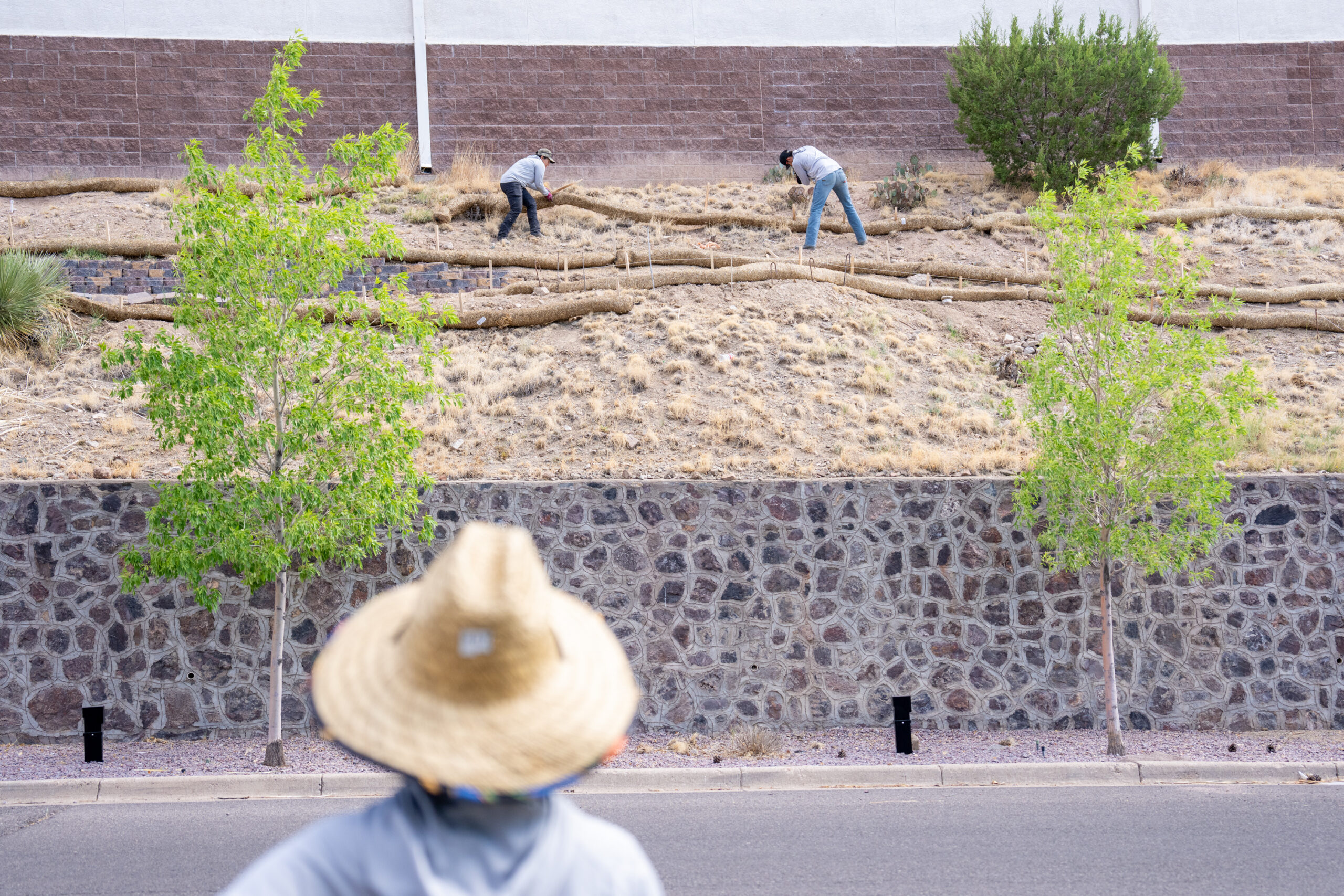SILVER CITY, NM—Anyone driving or walking along 10th Street on the Western New Mexico University campus has likely noticed a lot of changes happening on the hillside by Centennial Hall.
The boulders, retaining blocks and other changes are the first phase of a garden that WNMU Horticulture Coordinator Chala Werber and her team are installing around the residence hall.
The new garden was made possible by the Campus Beautification fund, which has allowed Werber and her team of two gardeners and a crew of student workers to get started on the project. The university also was given a $200,000 capital investment from the New Mexico Legislature for campus landscaping, which should allow the team to continue the landscaping around Centennial Hall.
Some of the decisions about how to landscape along 10th Street have been guided by a desire to help stabilize the slope, according to Werber. The boulders that were recently installed by Fowler Brothers Construction provide terracing and planting pockets to prevent soil from eroding.
The horticulture team has also put in straw wattles on the slope to stabilize the soil temporarily. For a longer-term solution, Werber turned to a product called Dirt Lockers. “They are made of recycled plastic, and they were invented to create a fish-scale type of pattern to hold the bank,” she said. “Once we get the Dirt Lockers in, we can plant shrubs and plants that will start to hold the soil with their roots.”
Werber and her team are also installing some retaining wall blocks, which will help to further stabilize the hillside and create a path to provide access to the gardens.
Once the soil retention measures are complete, Werber and her team will be ready to begin planting. “I have got already a bunch of xeric and native shrubs and trees and different kinds of plants,” she said. “Also, this is going to become part of the arboretum, so we are also going to plant some trees that we hope to bring to the area in the future—some unusual things.”
“It is where our test garden is going to be,” she explained, referring to the university’s plan to plant Climate-Ready trees.
The Climate-Ready Tree Program is designed to identify trees that will not only thrive in today’s climate but will also survive future conditions as the region warms due to climate change, said Werber. The goal is to then introduce those trees to urban landscapes to take advantage of the temperature-cooling effect and carbon sequestration benefits that trees afford.
The Climate-Ready trees in the arboretum will also serve an educational purpose, as the community will be able to see what trees do well as the climate continues to change and use that information to make decisions about what to plant in home gardens.
The university’s participation in the Climate-Ready Tree Program is especially appropriate given the fact that WNMU is a Tree Campus, as designated by the Arbor Day Foundation. The program should allow the campus arboretum to grow and thrive for many years to come.
Eventually, the landscape improvements will extend around the residence hall to the slope along West Street.
On that hillside, said Werber, “The terrace is going to be lavender fields, and then up above … the pathway will go to a two-tiered pollinator garden and fruit orchard.”
For now, though, Werber’s team is focused on completing the section of garden along 10th Street. “So much of gardening in New Mexico has to do with the ability to keep water on site. We get so dry that soil actually gets hydrophobic—it stops absorbing the moisture. And then if we get rain, it all just runs off into the street,” Werber explained. “The project we are doing here should be a great example of how we can keep water in place.”




